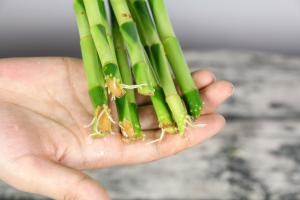How to Stake a Newly Planted Tree
When planting a young tree, it's important to ensure that it has the support it needs to grow and thrive. Staking is an effective way to provide this support, keeping the tree rooted in place and guarding against winds or other weather conditions that could cause it to uproot. Here are some tips on how to stake a newly planted tree:
Step 1: Choose Your Stake Material
Typically, you'll need two stakes for a newly planted tree, made out of either wood or metal. Wooden stakes are typically made of treated timber that has been pressure-treated to withstand rot and insects. Metal stakes are typically made out of galvanized steel or aluminum, which is less prone to rust than other metals.
Step 2: Drive the Stakes into the Ground
Before placing your stakes, make sure that you're positioning them in an area that won't interfere with the tree's growth or root system. The stakes should be spaced so that the tree is held firmly in place but still has enough room to sway a bit in the wind. Drive the stakes into the ground at an angle of about 45 degrees, so that they're leaning slightly away from the tree.
Step 3: Attach the Supporting Tie
You'll need a tie to secure the tree to the stakes. A soft but strong material like nylon webbing or rubber hose works well, as anything too rigid could damage the young tree. Tie the material to the stake, then loop it around the tree trunk and attach it to the other stake. Make sure that the tie material is wrapped around the tree loosely. This will allow the trunk to grow thicker over time without the tie material cutting into it.
Step 4: Maintain the Tie
As the tree grows, the supporting tie will need to be adjusted from time to time. Check it regularly to ensure that it's not too tight or too loose. As the tree grows thicker and its trunk expands, you may need to adjust the tie material accordingly to allow for continued growth. Eventually, the tree will become strong enough to support itself and you can remove the staking altogether.
Conclusion
Staking a newly planted tree is a relatively simple task that can provide long-lasting benefits as the tree grows and matures. By following these steps and being diligent in your maintenance, you can help ensure that your young tree grows strong, healthy, and beautiful for years to come.

 how many times do yo...
how many times do yo... how many planted tre...
how many planted tre... how many pine trees ...
how many pine trees ... how many pecan trees...
how many pecan trees... how many plants comp...
how many plants comp... how many plants can ...
how many plants can ... how many plants and ...
how many plants and ... how many pepper plan...
how many pepper plan...































